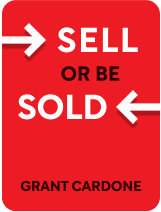

This article is an excerpt from the Shortform book guide to "Sell or Be Sold" by Grant Cardone. Shortform has the world's best summaries and analyses of books you should be reading.
Like this article? Sign up for a free trial here .
How do you connect with customers? Why should you avoid disagreements with customers?
You connect with customers by agreeing with the customer, no matter what the customer says. This will make the customer feel positively towards you, and ready to interact with you. You should avoid disagreeing with a customer because it will make the customer more entrenched in his position and the customer may lose enthusiasm for doing business with you.
Read on to discover how to connect with customers successfully.
How Do You Connect With Customers?
You connect with customers by prioritizing them and giving them good service. We’ll continue treating customers well in this step by agreeing with them.
The best way to connect with customers is to always agree with the customer, no matter what she says. You don’t have to think she’s right, but you have to at least agree that she thinks she’s right. (This isn’t manipulation because you’re just trying to have a positive interaction and you’re not actually agreeing with anything you oppose, you’re just agreeing with the existence of different viewpoints.) People like people and ideas they agree with and they’re more likely to buy from you if they think you’re on the same page.
- For example, if a customer is only going to give you 10 minutes to do your sales pitch, agree that that’s enough time. She’ll be surprised and impressed.
Once you’ve agreed and gotten the customer to feel more positive about you, you can connect with customers in two ways:
1. Convince her of your position or even that hers is wrong.
- For example, if a customer says a roof is too expensive, agree that new roofs cost a lot of money. Then, point out that they last 30 years and that repairing old roofs is expensive too.
2. Give her a chance to handle the objection herself. This will tell you how seriously she objects—if she comes up with a solution on her own, you’ll know that it wasn’t a very serious objection.
- (Shortform example: If you’re selling a house and the customer says the bedrooms are too small, agree with her. Then, ask her what she thinks can be done about it. If she muses about putting up mirrors to make the space look bigger, you know that she’s not actually that opposed to the square footage.)
If you disagree, you’ll only make a customer more certain of her own position and unlikely to want to work with you.
- For example, when Cardone was buying a product and wanted to pay cash for it, the salesman told him he should finance it instead. Cardone lost enthusiasm for doing business with him.
Even though disagreeing is obviously the wrong course of action, by nature, everyone wants to be right, so you’ll have to train yourself out of this reflex. Practice agreeing with people regularly, starting with people you know such as your family, friends, or colleagues. Cardone suggests the following drill: Spend an entire day agreeing with everyone you encounter. It will be a challenge—Cardone knows people who haven’t been able to agree with others for even half an hour.
Agreeing is also a great way to connect with customers and end conflict (it takes two to disagree, so if you swap sides, the disagreement automatically ends). It is also effective when responding to customer complaints. When a customer accuses you or your company of making a mistake, agree and offer to fix the problem.

———End of Preview———
Like what you just read? Read the rest of the world's best book summary and analysis of Grant Cardone's "Sell or Be Sold" at Shortform .
Here's what you'll find in our full Sell or Be Sold summary :
- How your happiness and even survival depend on your selling ability
- The five steps to becoming a master salesperson
- Step-by-plans to lead the customer to make a purchase






